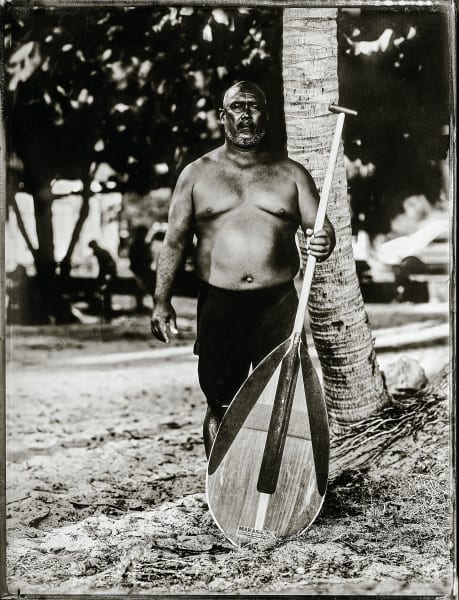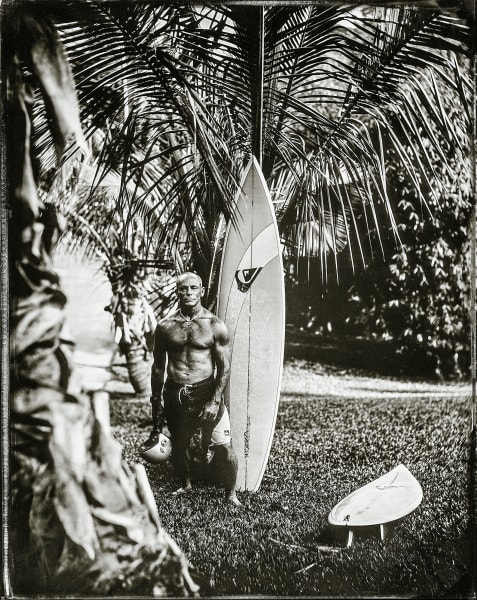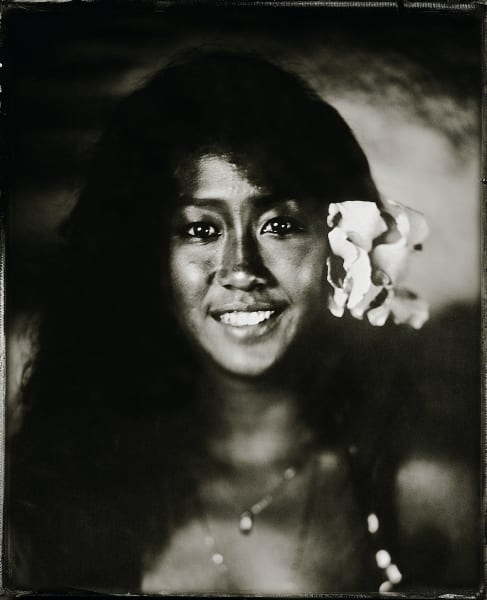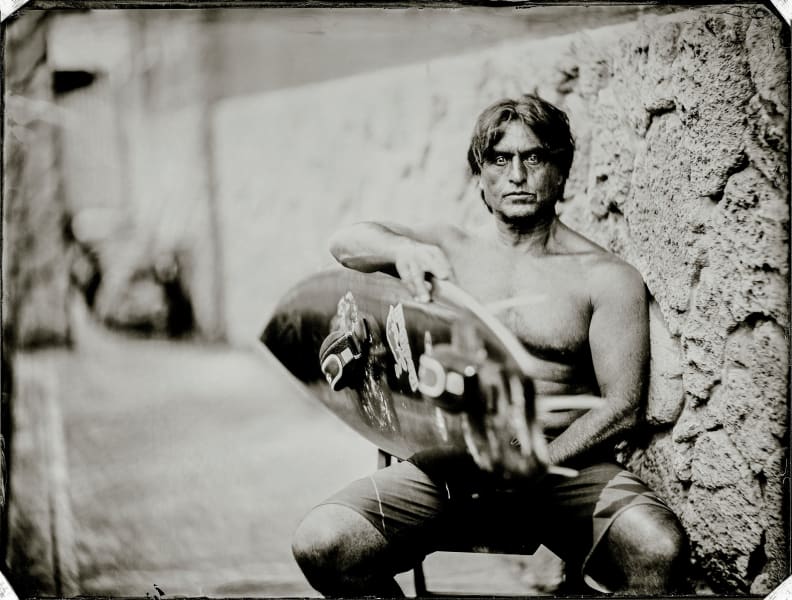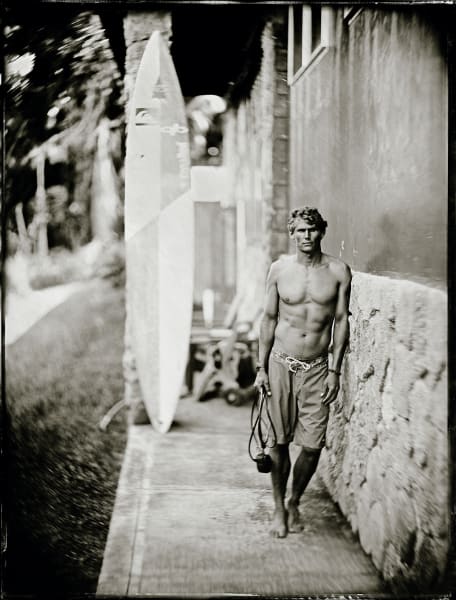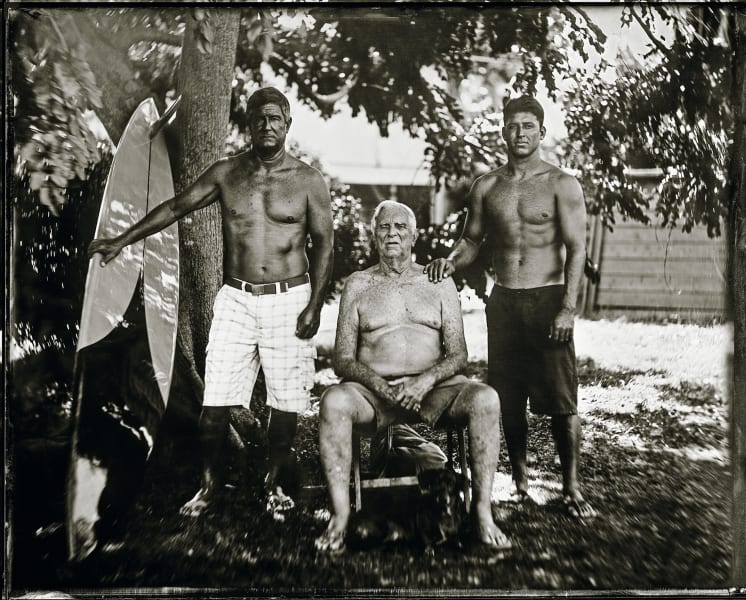Sport
Eddie Aikau Memorial: Board stars chase big waves in paradise
By Gary Morley, CNN
Published 0849 GMT (1649 HKT) December 1, 2015
Share
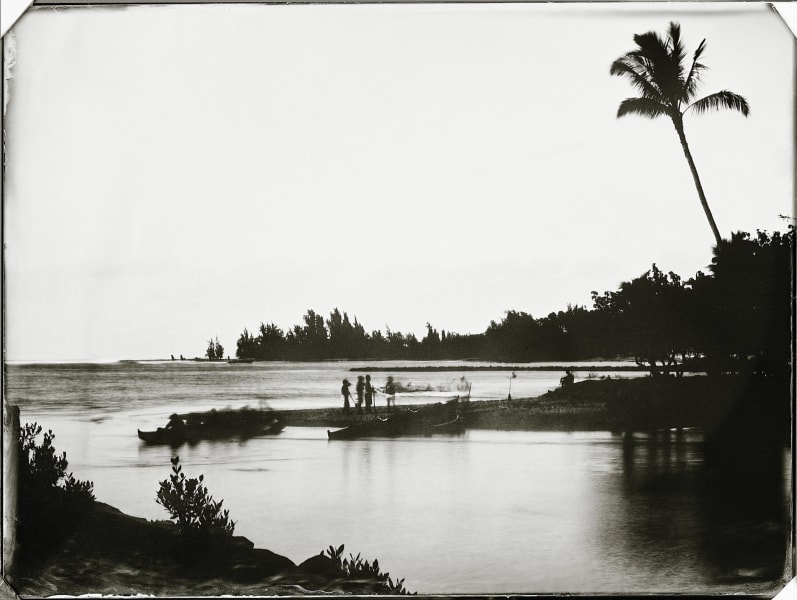

1 of 15
"I really wanted to shoot a picture where you cannot tell when it was taken ... it could be from 150 years ago," says photographer Bernard Testemale. bernard testemale
The Frenchman has put together a stunning exhibition of photos for the annual Eddie Aikau memorial surfing event in Hawaii, using collodion wet plate techniques from the 19th century.
This image is of Ross Clarke-Jones, who became the first non-Hawaiian victor in the 2000-01 staging.
"He's from Australia and he has such a strong face," says Testemale. Clarke-Jones' distinctive features are partly due to his great grandmother, who was from the Dayak headhunter tribe in Borneo.
"I photograph people simply, naturally. I have them face me and be themselves," Testemale says. bernard testemale
This image is of Ross Clarke-Jones, who became the first non-Hawaiian victor in the 2000-01 staging.
"He's from Australia and he has such a strong face," says Testemale. Clarke-Jones' distinctive features are partly due to his great grandmother, who was from the Dayak headhunter tribe in Borneo.
"I photograph people simply, naturally. I have them face me and be themselves," Testemale says. bernard testemale
The Australian is one of 27 surfers invited to the 2015-16 Aikau event at Waimea Bay. For this image, he is leaning against the wall in order to keep still, as the wet-plate process requires subjects to pose in place for up to five seconds, says Testemale.
"It's a really slow process because the sensitivity of the wet plate is really, really low, like one ISO (light sensitivity rating) or less. You cannot just click and get a picture, you have to be steady." bernard testemale
"It's a really slow process because the sensitivity of the wet plate is really, really low, like one ISO (light sensitivity rating) or less. You cannot just click and get a picture, you have to be steady." bernard testemale
Testemale sought to capture the essence of the close-knit Hawaiian surfing community. Pictured here is respected local Arthur Pia, who was cooking food at the beach.
"Guys like this are not big-wave riders but they are part of the side story," says Testemale. bernard testemale
"Guys like this are not big-wave riders but they are part of the side story," says Testemale. bernard testemale
Testemale calls his camera, which for these shots uses a 19th-century lens, a "Soul Trapper."
"You can see their soul, what they are, what they express through the eyes," he says.
Here he captured legendary three-time world surfing champion Tom Curren with his daughter Lee Ann, who also competes on the pro circuit. Both are keen musicians.
"I'm not a really big fan of this photo because it's a little bit under exposed, it looks a little bit dark to me," says Testemale, who generally uses his first take.
"But because it's father and daughter, it's a really interesting picture. Before we took it, Tom was playing guitar in my lodge near the studio in the house we rented in Hawaii. We spent an hour playing before we took the photo." bernard testemale
"You can see their soul, what they are, what they express through the eyes," he says.
Here he captured legendary three-time world surfing champion Tom Curren with his daughter Lee Ann, who also competes on the pro circuit. Both are keen musicians.
"I'm not a really big fan of this photo because it's a little bit under exposed, it looks a little bit dark to me," says Testemale, who generally uses his first take.
"But because it's father and daughter, it's a really interesting picture. Before we took it, Tom was playing guitar in my lodge near the studio in the house we rented in Hawaii. We spent an hour playing before we took the photo." bernard testemale
Testemale had a laboratory in his studio, where he went through the complicated process of chemically treating the plates.
"The hardest part was learning," he says. "I had to start from zero, I had to read all the photographic manuals from the 19th century, to put myself in their position and try to see what they are thinking."
Pictured is Dave Wassel, a lifeguard on the North Shore of Oahu and a big-wave surfer.
He's also a keen hunter, and here holds his bow -- while stuffed "trophy" pigs are nailed to the tree.
"Hunting is really popular in Hawaii," says Testemale. "Lots of people hunt with bow and arrow." bernard testemale
"The hardest part was learning," he says. "I had to start from zero, I had to read all the photographic manuals from the 19th century, to put myself in their position and try to see what they are thinking."
Pictured is Dave Wassel, a lifeguard on the North Shore of Oahu and a big-wave surfer.
He's also a keen hunter, and here holds his bow -- while stuffed "trophy" pigs are nailed to the tree.
"Hunting is really popular in Hawaii," says Testemale. "Lots of people hunt with bow and arrow." bernard testemale
Sometimes Testemale took his laboratory to the subject -- such as when he photographed perhaps Hawaii's most iconic tourist attraction, the bronze statue of surfing pioneer and Olympic swimming champion Duke Kahanamoku (1890-1968).
On the back of his swimming success, Kahanamoku was able to promote surfing as he traveled the world -- there is also a statue of him in Australia.
"In Hawaii, the Duke statue is like the Eiffel Tower for France," says Testemale. "Four million people come every year to take a photo in front of it. That was a mission for me to get the picture." bernard testemale
On the back of his swimming success, Kahanamoku was able to promote surfing as he traveled the world -- there is also a statue of him in Australia.
"In Hawaii, the Duke statue is like the Eiffel Tower for France," says Testemale. "Four million people come every year to take a photo in front of it. That was a mission for me to get the picture." bernard testemale
Testemale also recreated an iconic Hawaiian photo taken when Waikiki was still relatively undeveloped.
For his subject he chose Titus Nihi Kinimaka, a former big-wave competitor who regularly featured as an invitee in "the Eddie."
"One year he almost passed away, he dislocated his arm and he couldn't swim. They went in and saved him," the 57-year-old says.
"He's like a legend. And the way he looks with his long hair, face and native Hawaiian face, I wanted to use him for that photo. In his portrait he looks like an Indian chief, which is one of the major aims of this collection." Bernard Testemale
For his subject he chose Titus Nihi Kinimaka, a former big-wave competitor who regularly featured as an invitee in "the Eddie."
"One year he almost passed away, he dislocated his arm and he couldn't swim. They went in and saved him," the 57-year-old says.
"He's like a legend. And the way he looks with his long hair, face and native Hawaiian face, I wanted to use him for that photo. In his portrait he looks like an Indian chief, which is one of the major aims of this collection." Bernard Testemale
The Aikau family has a custodial role as protectors of the Waimea Valley, where a river spills out into idyllic Waimea Bay and meets the notorious monster waves needed for "the Eddie."
"It's a really strong and beautiful place, it's like a natural theater," says Testemale. "It's so spectacular to see mountains arise from far, and tiny surfers on the top of big walls (of water)."
Pictured is Noah Johnson, who won the 1998-99 "Eddie" and now works as a lifeguard and stuntman for Hollywood movies and TV series such as "Hawaii Five-0."
"He's a really funny guy, a tiny little guy," says Testemale. "In my house I had these old vintage lifeguard buoys, so I used this one for fun." bernard testemale
"It's a really strong and beautiful place, it's like a natural theater," says Testemale. "It's so spectacular to see mountains arise from far, and tiny surfers on the top of big walls (of water)."
Pictured is Noah Johnson, who won the 1998-99 "Eddie" and now works as a lifeguard and stuntman for Hollywood movies and TV series such as "Hawaii Five-0."
"He's a really funny guy, a tiny little guy," says Testemale. "In my house I had these old vintage lifeguard buoys, so I used this one for fun." bernard testemale
Hawaii native Dorian is one of the world's leading big-wave surfers, having stepped up from the regular circuit.
"This can show you what sort of board you use for Waimea," says Testemale. "If you have big waves you need a big board -- and they use bigger boards than this one.
"I shoot the people with their boards to show the scale. We call it a gun -- it's kind of narrow and long, mainly to surf hollow fast waves or big waves." bernard testemale
"This can show you what sort of board you use for Waimea," says Testemale. "If you have big waves you need a big board -- and they use bigger boards than this one.
"I shoot the people with their boards to show the scale. We call it a gun -- it's kind of narrow and long, mainly to surf hollow fast waves or big waves." bernard testemale
Christensen, another Hawaiian, has been invited to "the Eddie" since 2008-09. As well as his surfing interests, he has an organic farm inland on Oahu.
"I moved my lab to his farm," says Testemale, who also has a farm back home in France.
"The dog came in and jumped in the car!" bernard testemale
"I moved my lab to his farm," says Testemale, who also has a farm back home in France.
"The dog came in and jumped in the car!" bernard testemale
George Downing (seated) is a Hawaiian surfing pioneer, and is the longtime contest director for "the Eddie" -- he decides if the event will take place.
His son Keone Downing (left) won the contest in 1989-90, riding a board shaped by his dad. Keone's son Kaohi (right) also surfs, and at one stage played minor league baseball. bernard testemale
His son Keone Downing (left) won the contest in 1989-90, riding a board shaped by his dad. Keone's son Kaohi (right) also surfs, and at one stage played minor league baseball. bernard testemale
Testemale says the wet-plate development process is "quite fast -- you can see the photo coming to life in two or three minutes, like a polaroid." Another thing in common with the instant format is the photographs' distinctive borders.
Here he pictured Hawaiian canoe racer and lifeguard Mel Puu.
"He brought this paddle to Paris, he left it here in my house. I'm going to use it everywhere I go," Testemale says. bernard testemale
Here he pictured Hawaiian canoe racer and lifeguard Mel Puu.
"He brought this paddle to Paris, he left it here in my house. I'm going to use it everywhere I go," Testemale says. bernard testemale
Diminutive in height but a giant on the waves, Australia's two-time world champion Carroll earned surfing's first million-dollar sponsorship following his 1988 deal with Quiksilver.
"He was a legend of surfing," Testemale says. "That board is a replica of the one that he used when he was the world champion and when he won the Pipe Masters (three times).
"The design of his board, it's renowned in the surfing world. He was always wearing a helmet because of injuries." bernard testemale
"He was a legend of surfing," Testemale says. "That board is a replica of the one that he used when he was the world champion and when he won the Pipe Masters (three times).
"The design of his board, it's renowned in the surfing world. He was always wearing a helmet because of injuries." bernard testemale
Not everyone instantly approved of the way they looked through Testemale's lens -- including two-time women's world longboard champ Moniz.
The 22-year-old was transformed from a modern surfer girl into a "Hawaiian princess."
"It's hard to tell how young or old she is," Testemale says of the portrait. "When she came to life in the liquid, it was a little bit scary to see her in this way. It's not the usual image she carries.
"Her dad and mom were there ... they got the point straight away. He said, 'Let Kelia have some time and she will fall in love with this photo.'"
For more information on the Eddie Aikau memorial, visit Quiksilver's website
bernard testemale
The 22-year-old was transformed from a modern surfer girl into a "Hawaiian princess."
"It's hard to tell how young or old she is," Testemale says of the portrait. "When she came to life in the liquid, it was a little bit scary to see her in this way. It's not the usual image she carries.
"Her dad and mom were there ... they got the point straight away. He said, 'Let Kelia have some time and she will fall in love with this photo.'"
For more information on the Eddie Aikau memorial, visit Quiksilver's website
bernard testemale
